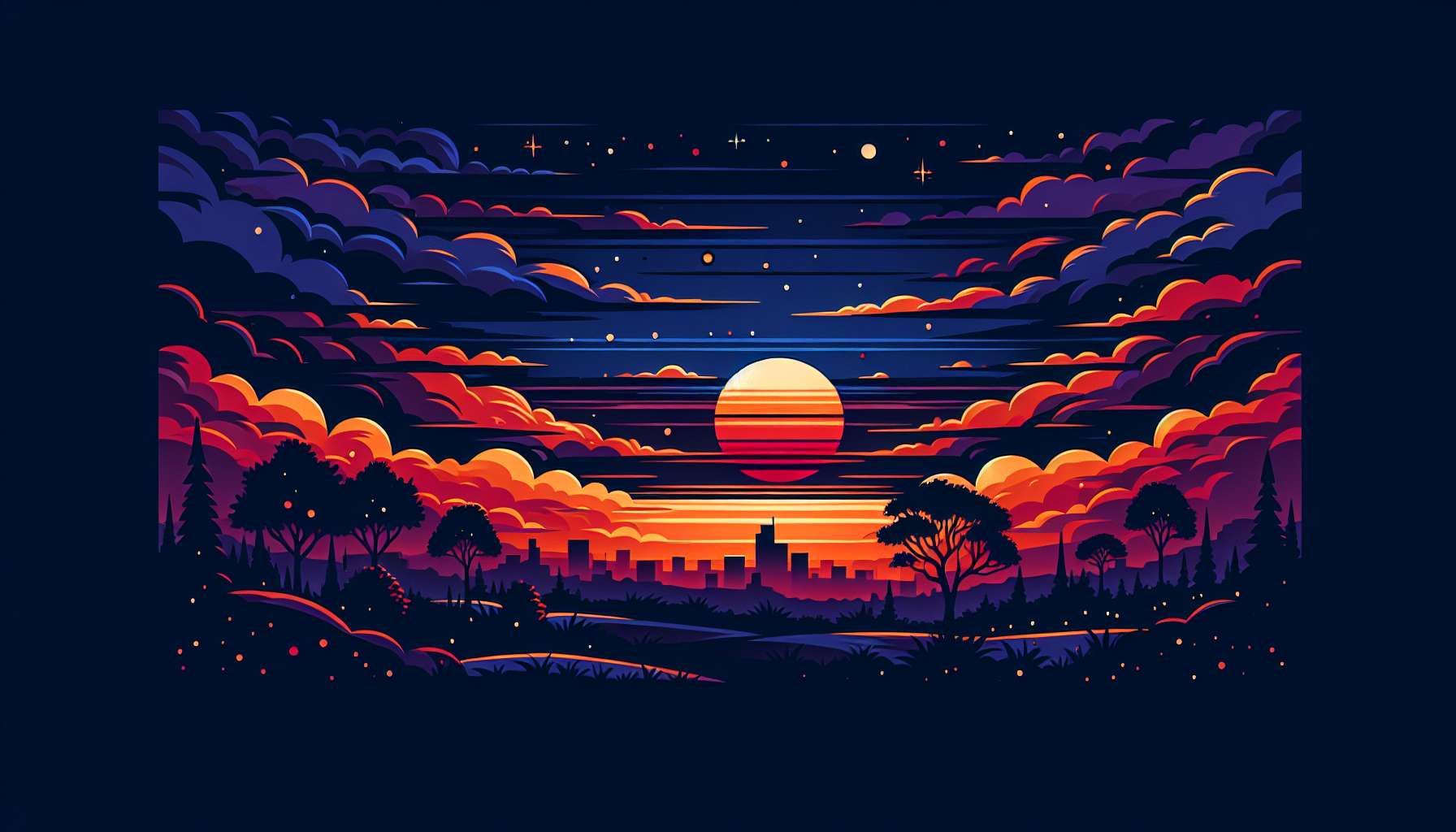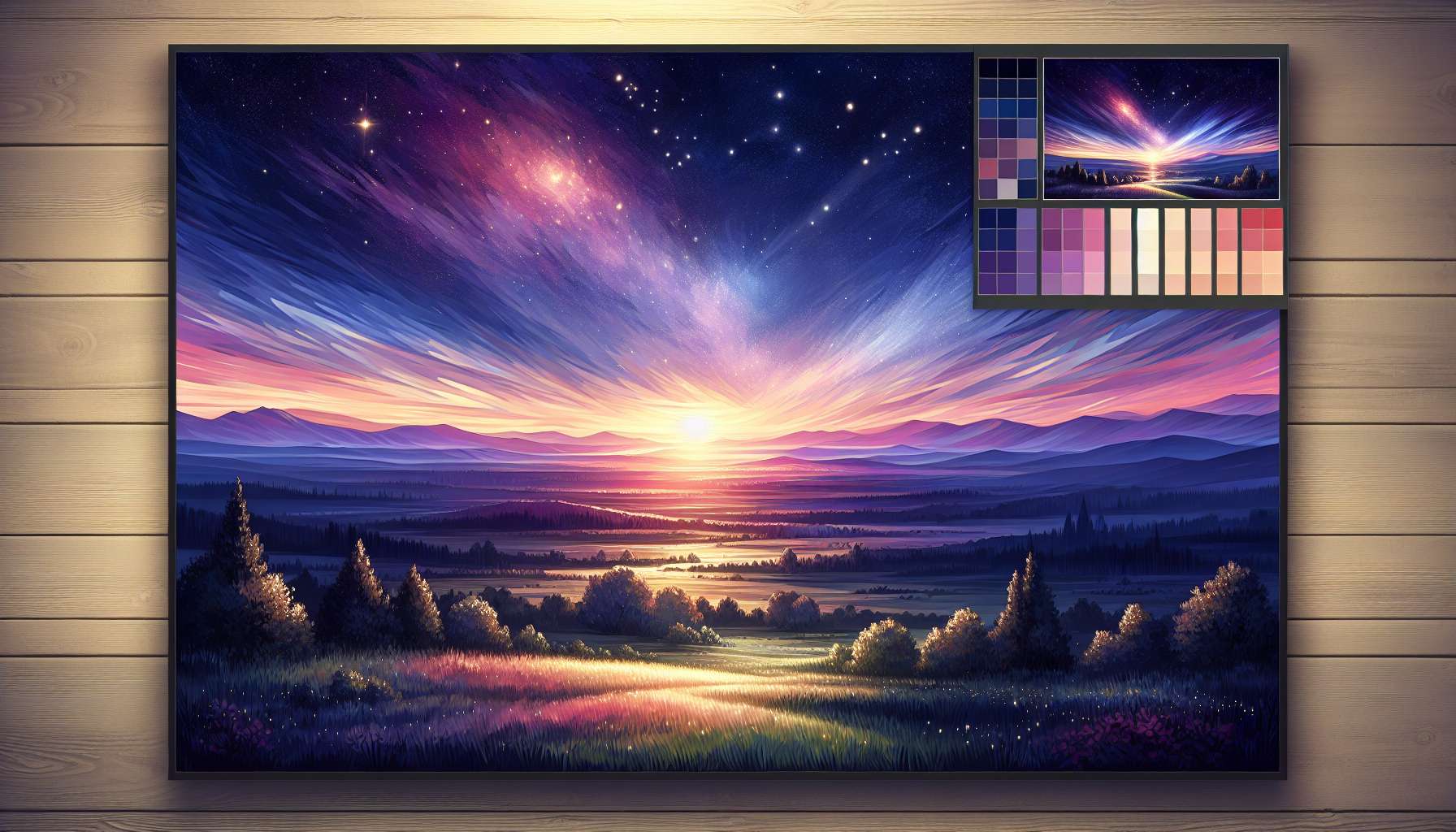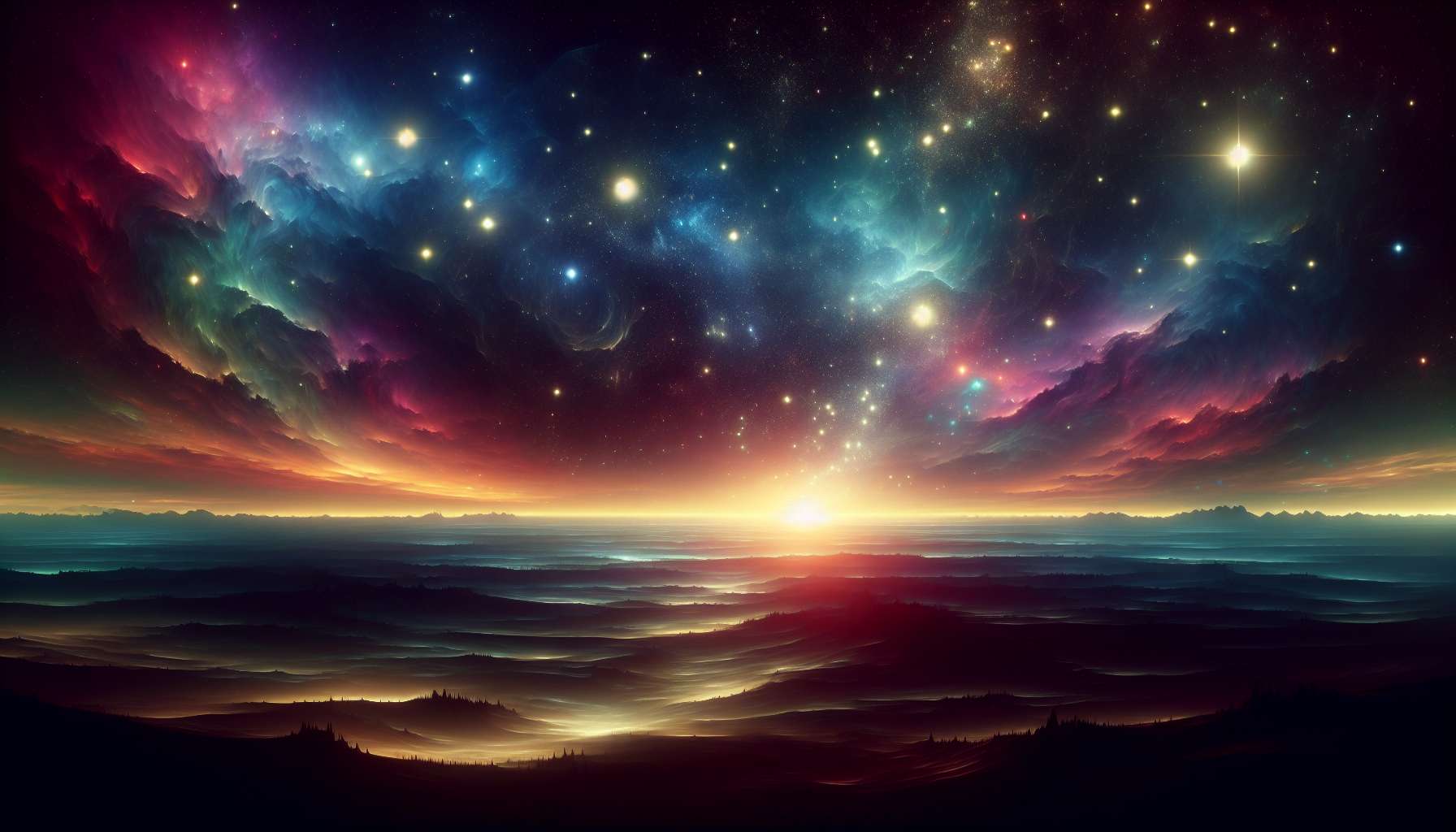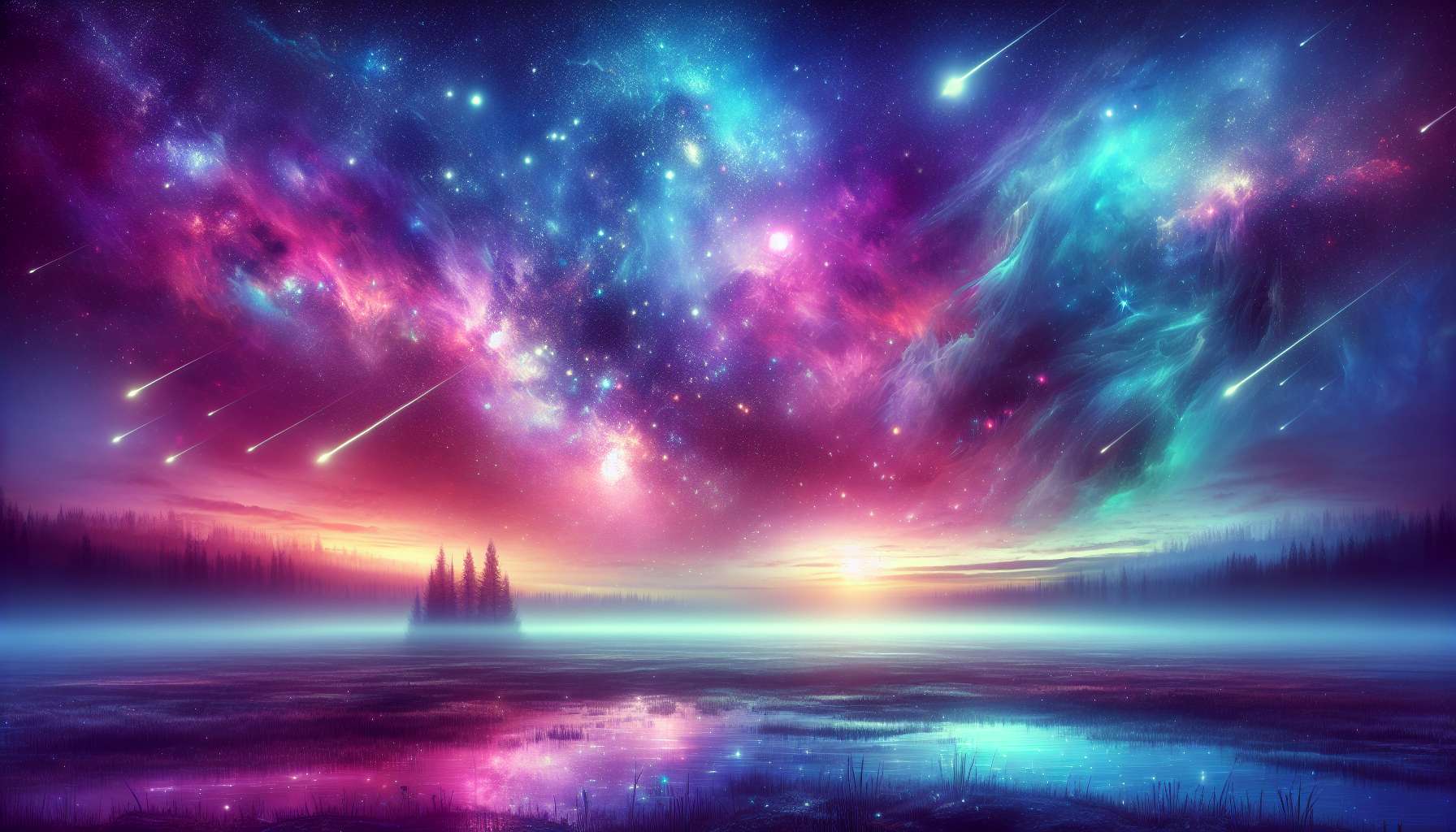Exploring the Beauty of Visual Art Inspired by Dusk
As the sun dips below the horizon, casting a warm glow across the sky and landscape, dusk emerges as a time of transition and transformation. Artists throughout history have been captivated by the fleeting beauty of this magical hour, using it as inspiration for their creations. From the Impressionists to contemporary photographers, ‘Visual art inspired by dusk’ has produced some of the most mesmerizing and thought-provoking works in the art world. In this article, we will delve into the world of visual art that captures the essence of dusk, exploring its significance, techniques, and impact on the viewer.
The Allure of Dusk in Art
There is something undeniably enchanting about dusk – a time when the world is bathed in a soft, ethereal light that blurs the boundaries between day and night. Artists have long been drawn to this transitional period, using it as a backdrop to convey a sense of mystery, nostalgia, and tranquility in their work. From the dreamy landscapes of the Hudson River School painters to the moody urban scenes of Edward Hopper, dusk has served as a rich source of inspiration for artists across different genres and styles.
The Influence of Dusk on Color Palette
One of the most striking aspects of dusk is its unique color palette. The sky transforms into a canvas of vivid hues – from fiery oranges and pinks to deep purples and blues – as the sun sets and the world is cloaked in shadow. Artists often use these rich, evocative colors to create mood and atmosphere in their works, playing with light and shadow to capture the essence of dusk in all its glory.
For example, the Impressionist painters, with their focus on capturing the effects of light and color in nature, were particularly adept at depicting the subtle shifts in color and tone that occur during dusk. Artists like Claude Monet and Pierre-Auguste Renoir created stunning works that convey the luminous quality of dusk, using a vibrant color palette and loose, expressive brushwork to evoke a sense of movement and life in their paintings.
Techniques for Capturing Dusk in Art
Capturing the ephemeral beauty of dusk in art requires a keen eye for observation and a mastery of various techniques. Artists often use a combination of light, color, composition, and texture to evoke the mood and atmosphere of dusk in their work. Some common techniques for capturing dusk in art include:
1. Chiaroscuro
Chiaroscuro, an Italian term meaning “light-dark,” refers to the use of strong contrasts between light and dark to create a sense of volume and depth in a painting. This technique is often employed by artists to enhance the dramatic effect of dusk, emphasizing the play of light and shadow in the scene.
2. Atmospheric Perspective
Atmospheric perspective involves using color and value to create the illusion of depth and distance in a painting. During dusk, the colors in the sky and landscape become more muted and hazy, creating a soft, dreamlike effect. Artists can use this atmospheric perspective to convey the sense of depth and space in their dusk-inspired works.
3. Impasto
Impasto is a painting technique where thick layers of paint are applied to the canvas, creating a textured, tactile surface. Artists can use impasto to build up the layers of color and texture in a dusk scene, adding a sense of richness and depth to the painting.
Dusk in Contemporary Art
While traditional artists have long been inspired by the beauty of dusk, contemporary artists are also finding new ways to explore this theme in their work. From photography to digital art, artists are pushing the boundaries of what is possible in capturing the essence of dusk in their creations.
One such artist is Sarah Moon, a French photographer known for her dreamlike, poetic images that often depict scenes at dusk. Moon’s work blurs the line between reality and fantasy, using soft focus and muted colors to create a sense of mystery and nostalgia in her photographs. Her ethereal images evoke the fleeting beauty of dusk, inviting viewers to contemplate the passage of time and the transience of beauty.
The Emotional Impact of Dusk in Art
Artists often use dusk as a metaphor for the passage of time, the fleeting nature of beauty, and the inevitability of change. By capturing the transient beauty of dusk in their work, artists can evoke a wide range of emotions in the viewer – from nostalgia and melancholy to wonder and awe.
For example, the American painter Winslow Homer often depicted scenes at dusk in his work, using the fading light and long shadows to create a sense of quiet introspection and contemplation. In his iconic painting “Northeaster,” Homer captures the eerie stillness of a stormy dusk at sea, conveying a sense of isolation and vulnerability in the face of nature’s power.
Expert Opinions on ‘Visual art inspired by dusk’
Renowned art historian Dr. Emily Wilson explains, “Dusk has long been a favorite subject for artists due to its rich color palette and evocative atmosphere. Artists have used dusk as a metaphor for the passage of time and the fleeting nature of beauty, creating works that resonate with viewers on a deeply emotional level.”
Common Misconceptions about ‘Visual art inspired by dusk’
One common misconception about art inspired by dusk is that it is limited to landscape painting. While landscapes have traditionally been a popular subject for dusk-inspired art, artists in other genres and mediums are also exploring this theme in their work. From abstract paintings to digital art installations, artists are finding new ways to capture the essence of dusk and its emotional resonance.
Comparative Analysis: Dusk vs. Dawn in Art
While dusk and dawn are both transitional periods marked by the play of light and shadow, they evoke different emotions and moods in art. Dusk is often associated with the end of the day, a time of reflection and introspection, while dawn symbolizes the beginning of a new day, a time of renewal and hope. Artists have explored these contrasting themes in their work, using the unique qualities of each time of day to convey a wide range of emotions and ideas.
Conclusion
In conclusion, ‘Visual art inspired by dusk’ offers a rich tapestry of color, emotion, and atmosphere that has captivated artists and viewers alike for centuries. From the luminous landscapes of the Impressionists to the haunting urban scenes of contemporary photographers, dusk has served as a powerful source of inspiration for artists across different genres and styles. By capturing the fleeting beauty of dusk in their work, artists can evoke a wide range of emotions in the viewer, from nostalgia and melancholy to wonder and awe. As we continue to explore the beauty and mystery of dusk in art, we are reminded of the profound and enduring power of visual art to move, inspire, and transform us.




